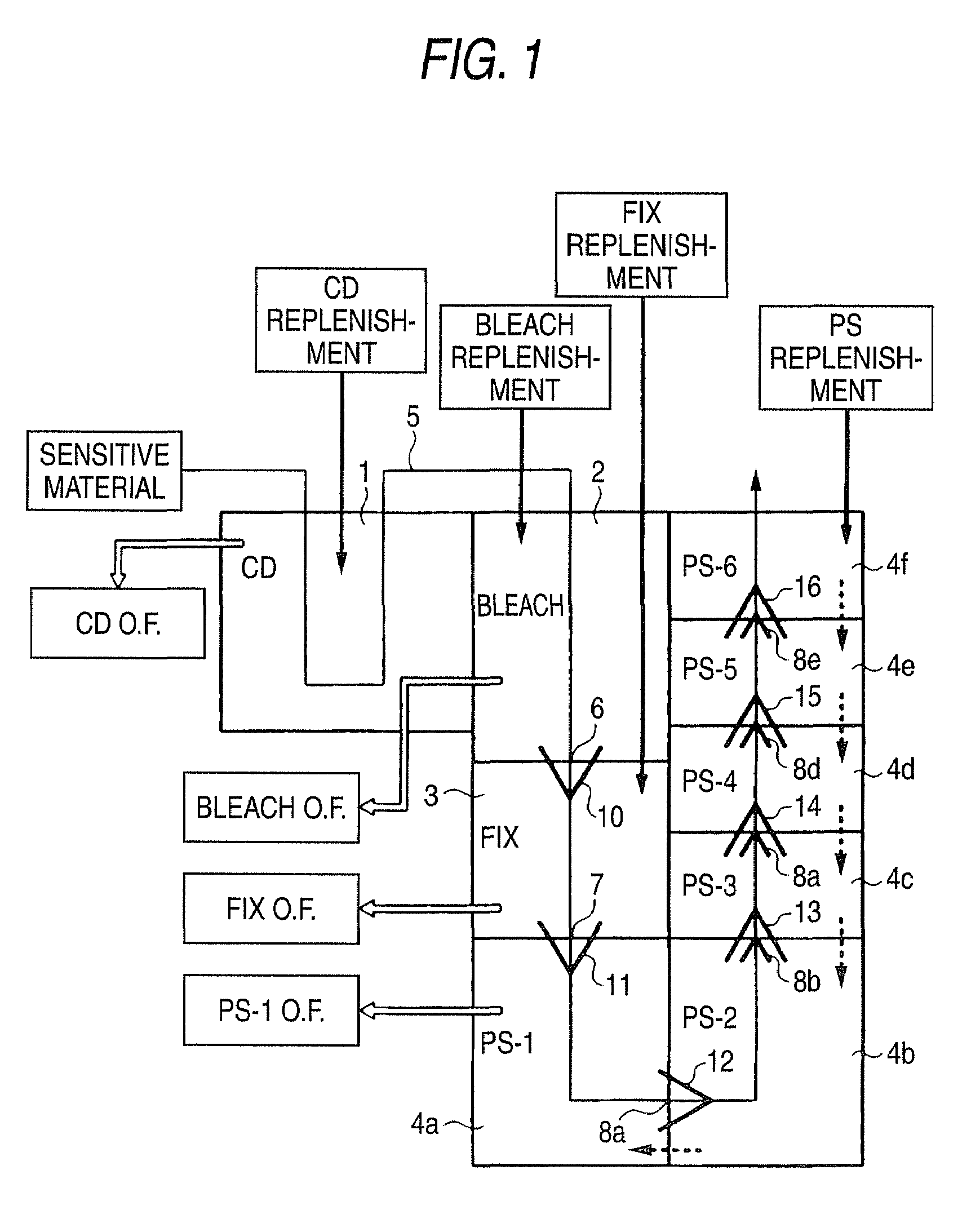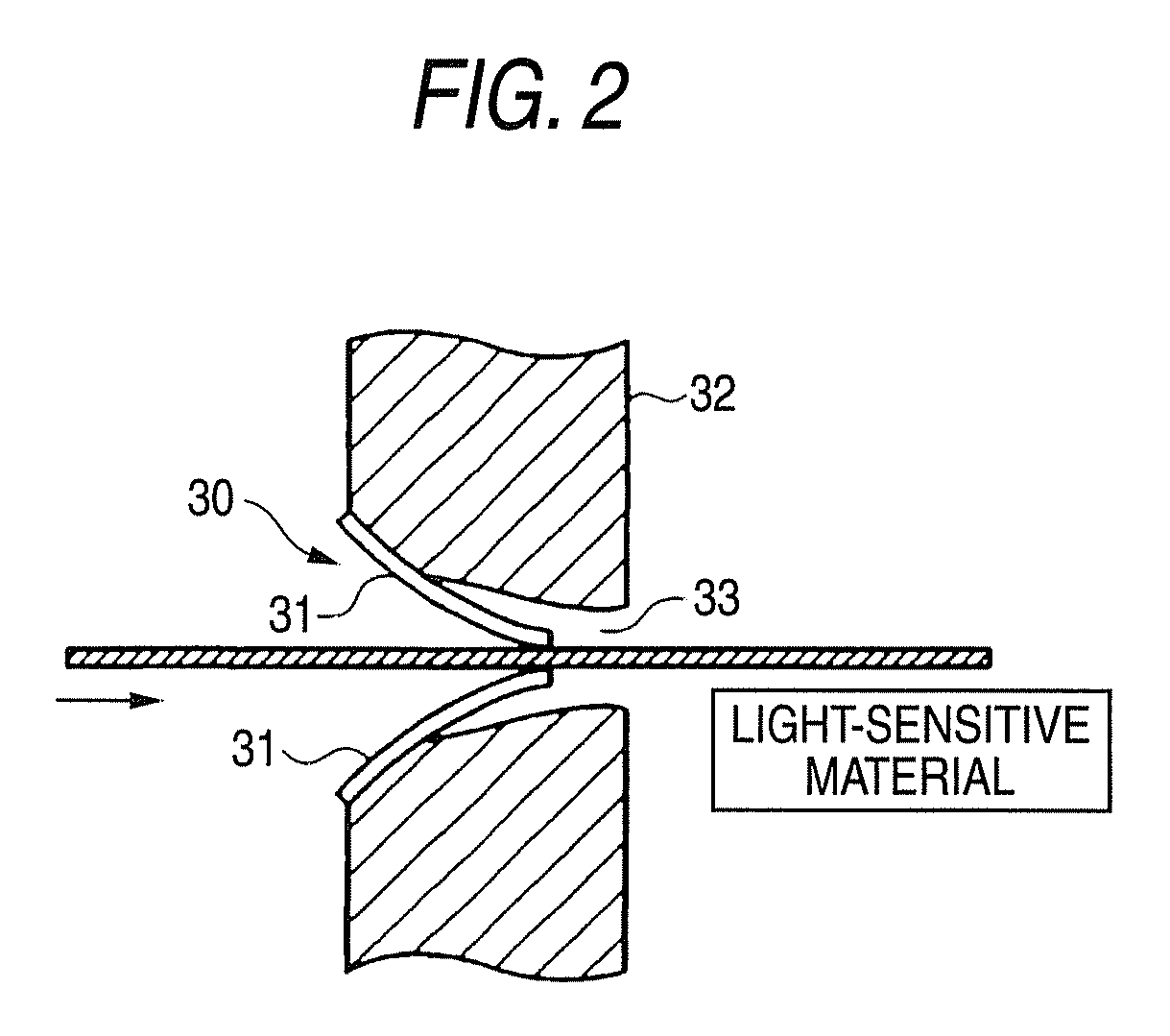Concentrated processing composition for silver halide color paper and method of processing
a technology of color paper and concentrated processing, applied in the field of processing silver halide color paper, can solve the problems of insufficient silver removal, insufficient processing time, and waste of unnecessary products produced in the course of producing color prints, and achieve the effects of shortening the processing time, increasing the stain with time of a treated light-sensitive material, and speeding up processing
- Summary
- Abstract
- Description
- Claims
- Application Information
AI Technical Summary
Benefits of technology
Problems solved by technology
Method used
Image
Examples
examples
[0226]The invention will be more specifically described below by reference to examples which, however, do not limit the scope of the invention in any way.
1. Preparation of Light-sensitive Materials to be Tested
(Preparation of Blue-sensitive Layer Emulsion BH-1)
[0227]Cubic grains having a high silver chloride content were prepared by a method of simultaneously adding silver nitrate and sodium chloride to a deionized distilled water containing deionized gelatin under stirring to mix. In the course of this preparation, Cs2[OsCl5(NO)] was added over a period of from the point where addition of silver nitrate was 60% to the point where addition of silver nitrate was 80%. Potassium bromide (1.5 mol % per mol of finished silver halide) and K4[Fe(CN)6] were added thereto over a period of from the point where addition of silver nitrate was 80% to the point where addition of silver nitrate was 90%. K2[IrCl6] was added over a period of from the point where addition of silver nitrate was 83% to...
PUM
| Property | Measurement | Unit |
|---|---|---|
| processing time | aaaaa | aaaaa |
| time | aaaaa | aaaaa |
| time | aaaaa | aaaaa |
Abstract
Description
Claims
Application Information
 Login to View More
Login to View More - R&D
- Intellectual Property
- Life Sciences
- Materials
- Tech Scout
- Unparalleled Data Quality
- Higher Quality Content
- 60% Fewer Hallucinations
Browse by: Latest US Patents, China's latest patents, Technical Efficacy Thesaurus, Application Domain, Technology Topic, Popular Technical Reports.
© 2025 PatSnap. All rights reserved.Legal|Privacy policy|Modern Slavery Act Transparency Statement|Sitemap|About US| Contact US: help@patsnap.com



